Rising Incidence of Bipolar Disorder
The increasing incidence of bipolar disorder is a significant driver for the Pharmaceutical Grade Lithium Carbonate Market. As more individuals are diagnosed with this condition, the demand for effective treatment options, including lithium carbonate, is expected to rise. Recent statistics indicate that bipolar disorder affects approximately 2.8% of the adult population, highlighting the urgent need for effective management strategies. Lithium carbonate remains a cornerstone in the treatment of bipolar disorder, and its continued use is likely to bolster the market. This trend underscores the critical role of pharmaceutical-grade lithium carbonate in addressing the needs of patients with mood disorders.
Advancements in Pharmaceutical Research
Innovations in pharmaceutical research are driving the Pharmaceutical Grade Lithium Carbonate Market forward. Researchers are exploring new formulations and delivery methods that enhance the bioavailability and effectiveness of lithium carbonate. These advancements may lead to the development of novel therapies that utilize lithium in combination with other agents, potentially improving patient outcomes. Furthermore, the increasing focus on personalized medicine suggests that tailored lithium treatments could emerge, catering to individual patient needs. This evolving landscape indicates a promising future for the pharmaceutical-grade lithium carbonate sector, as it adapts to the changing demands of healthcare.
Integration with Emerging Therapeutic Areas
The Pharmaceutical Grade Lithium Carbonate Market is poised for growth through its integration with emerging therapeutic areas, such as neurology and psychiatry. As research continues to unveil the multifaceted benefits of lithium, its application may extend beyond traditional mental health treatments. For instance, studies are exploring lithium's neuroprotective properties, suggesting potential uses in neurodegenerative diseases. This expansion into new therapeutic domains could open up additional revenue streams for pharmaceutical companies, thereby enhancing the overall market for pharmaceutical-grade lithium carbonate. The evolving understanding of lithium's therapeutic potential indicates a promising trajectory for the industry.
Increasing Demand for Mental Health Treatments
The Pharmaceutical Grade Lithium Carbonate Market is experiencing a notable surge in demand due to the rising prevalence of mental health disorders. As awareness of mental health issues grows, more individuals seek effective treatments, particularly for conditions such as bipolar disorder and depression. Lithium carbonate, recognized for its efficacy in stabilizing mood, is increasingly prescribed by healthcare professionals. According to recent data, the market for lithium carbonate is projected to expand significantly, with estimates suggesting a compound annual growth rate of over 5% in the coming years. This trend indicates a robust demand for pharmaceutical-grade lithium carbonate, as it plays a crucial role in mental health management.
Regulatory Support for Mental Health Medications
The Pharmaceutical Grade Lithium Carbonate Market benefits from favorable regulatory environments that support the development and approval of mental health medications. Regulatory agencies are increasingly recognizing the importance of mental health treatments, leading to streamlined approval processes for new lithium-based therapies. This regulatory support not only facilitates quicker access to essential medications but also encourages pharmaceutical companies to invest in research and development. As a result, the market for pharmaceutical-grade lithium carbonate is likely to see an influx of innovative products, further solidifying its position in the mental health treatment landscape.


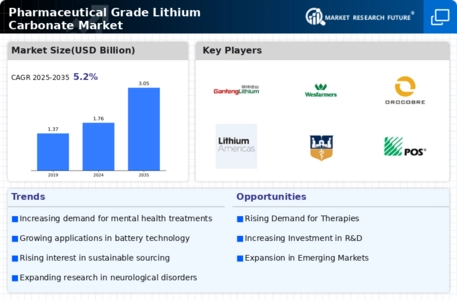
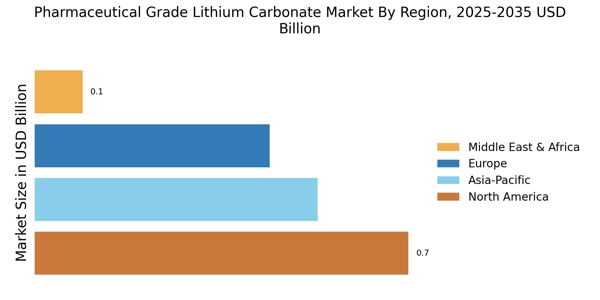

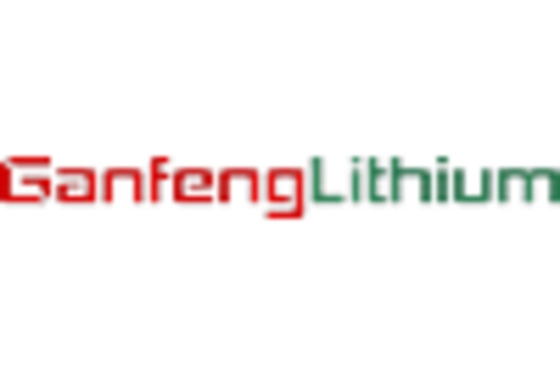


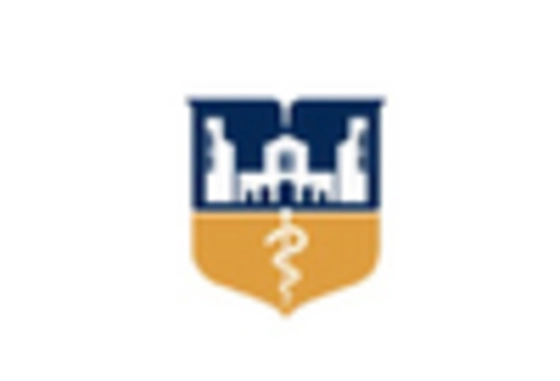
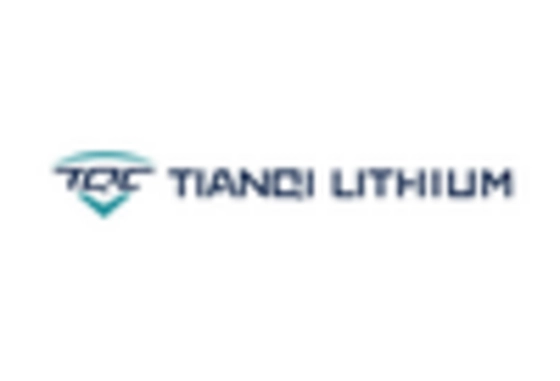








Leave a Comment